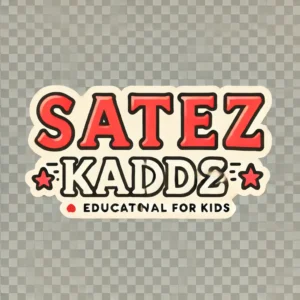The global IT talent market demands innovative approaches to recruitment. Agent of Record (AOR) services and traditional recruitment methods represent two distinct strategies for acquiring tech talent. Each approach offers unique advantages and challenges, catering to different organizational needs and market conditions.
Comprehensive Service Scope and Talent Sourcing
An AOR provider manages the entire employment lifecycle, from recruitment to ongoing employment administration. This comprehensive service extends beyond the scope of traditional recruitment agencies, which typically focus solely on candidate sourcing and placement. The AOR company takes on legal employer responsibilities, handling payroll, benefits, and compliance issues across multiple jurisdictions.
Traditional recruitment relies on established networks and industry connections to source candidates. In contrast, an AOR provider leverages global resources and specialized knowledge of international labor markets to access a broader talent pool. This expanded reach is particularly valuable for companies seeking niche skills or looking to establish a presence in new geographical markets.
Compliance Management and Risk Mitigation
Compliance management represents a significant differentiator between the two approaches. An AOR company assumes responsibility for navigating complex international employment laws, tax regulations, and visa requirements. Traditional recruitment agencies often leave these critical compliance issues to the hiring company, potentially exposing them to legal risks and administrative burdens.
Risk management is a critical consideration. AOR services significantly reduce employment-related risks by taking on legal employer responsibilities. Traditional recruitment leaves the hiring company exposed to potential misclassification issues, tax compliance problems, and other legal challenges associated with international employment.
Data privacy compliance is increasingly critical in the tech industry. AOR providers are typically well-equipped to handle data privacy regulations across different countries, ensuring compliance with laws like GDPR. Traditional recruitment agencies may not offer the same level of data protection expertise, potentially exposing companies to compliance risks.
Cost Structures and Scalability
Cost structures differ significantly between AOR and traditional recruitment models. Traditional agencies typically charge a percentage of the hired employee’s first-year salary as a one-time fee. AOR services, while often more expensive upfront, provide ongoing value through continuous employment management and risk mitigation. This long-term approach can result in cost savings and reduced liability for companies operating in multiple countries.
Scalability is another key differentiator. AOR services offer greater flexibility for companies looking to scale their workforce rapidly or enter new markets. Traditional recruitment may struggle to keep pace with sudden demand increases or lack the international infrastructure to support global expansion efficiently.
Time-to-hire metrics often favor AOR services, especially for international placements. The streamlined processes and existing infrastructure of AOR providers can significantly reduce the time required to onboard new employees across different countries. Traditional recruitment may face delays due to complex international hiring procedures and lack of local market knowledge.
Employer Branding and Candidate Experience
Employer branding presents challenges and opportunities for both approaches. Traditional recruitment allows companies to maintain direct control over their employer brand throughout the hiring process. AOR services, while potentially diluting brand control, can enhance a company’s global reputation by ensuring compliance and providing a positive employment experience across all locations.
Candidate experience varies between the two models. Traditional recruitment often provides a more personalized approach, with direct interaction between the candidate and the hiring company. AOR services standardize the employment experience across regions, which can be beneficial for ensuring consistency but may lack the personal touch of direct recruitment.
Technology Integration and Performance Management
Technology integration differs between AOR and traditional recruitment. AOR providers often offer sophisticated HR technology platforms that integrate with a company’s existing systems, providing comprehensive workforce management tools. Traditional recruitment agencies may use applicant tracking systems but typically do not offer the same level of technological integration for ongoing employment management.
Performance management approaches also differ. Traditional recruitment typically ends its involvement after the placement is made, leaving performance management entirely to the hiring company. AOR services often include ongoing performance monitoring and management support, ensuring consistent evaluation practices across global teams.
Cultural Adaptation and Intellectual Property Protection
Cultural adaptation is handled differently by each approach. Traditional recruitment relies on the hiring company to manage cultural integration of new employees. AOR services often provide cultural training and support as part of their offering, facilitating smoother integration of international hires into diverse teams.
Intellectual property protection is a concern for many tech companies. These services can provide standardized IP protection clauses in employment contracts across all jurisdictions, ensuring consistent safeguarding of company assets. Traditional recruitment leaves this responsibility to the hiring company, which may lead to inconsistencies in IP protection measures.
Talent Retention and Employment Flexibility
Talent retention strategies differ between the two approaches.
AOR Services:
- Ongoing employee engagement initiatives.
- Career development support.
- Consistent global benefits management.
- Regular performance reviews and feedback.
Traditional Recruitment:
- Limited post-placement involvement.
- Retention responsibility lies with the hiring company.
- May offer occasional check-ins or redeployment services.
Flexibility in employment models is another area where AOR services excel. They can easily accommodate various working arrangements, including:
- Full-time employment.
- Contract work.
- Project-based engagements.
- Temporary staffing.
- Freelance management.
Traditional recruitment often focuses on standard employment models, potentially limiting options for companies seeking more flexible workforce solutions.
Conclusion
The choice between AOR services and traditional recruitment depends on a company’s specific needs, growth plans, and risk tolerance. AOR services offer comprehensive solutions for companies seeking to build and manage global tech teams, providing expertise in compliance, risk management, and ongoing employment administration. Traditional recruitment remains valuable for companies focused on local markets or preferring direct control over the hiring process.
As the global tech talent landscape continues to evolve, organizations must carefully evaluate these approaches to determine the best fit for their talent acquisition and management strategies. Factors such as international expansion plans, regulatory compliance needs, and desired level of control over the employment process should all be considered when choosing between AOR and traditional recruitment methods.
Ultimately, many companies may find that a hybrid approach, utilizing both AOR services and traditional recruitment depending on specific hiring needs and target markets, provides the most comprehensive and flexible solution for building and managing a global tech workforce in today’s competitive talent landscape.









